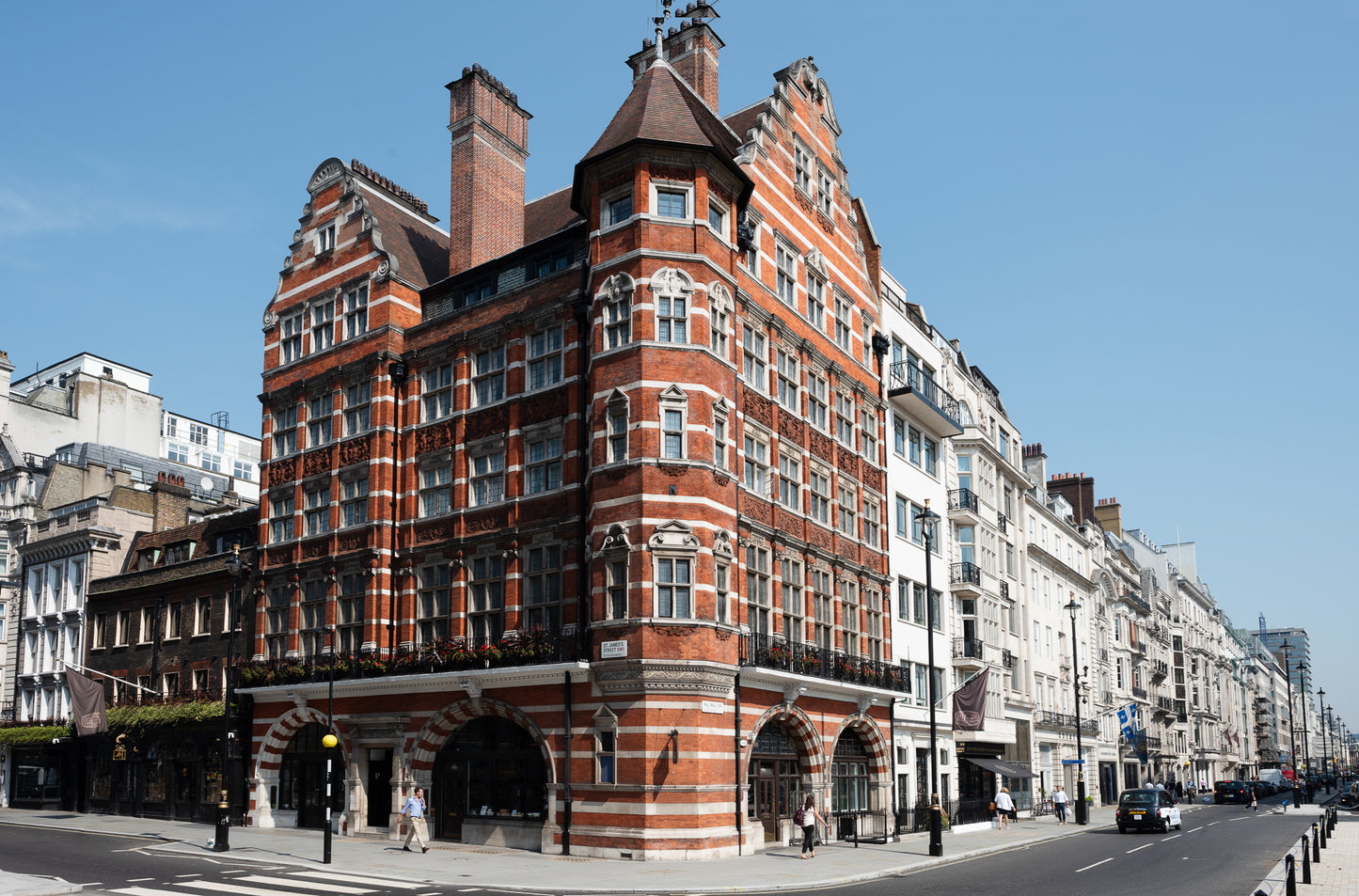
Despite the thrum of Piccadilly’s traffic a stone’s throw away and the more 21st century elements of the area, such as electric car charging points, the streets around St James’s exude history and storytelling in abundance. From Pall Mall to Jermyn Street, there is a story behind every door and a tale behind every set of black Georgian railings. The lower St. James’s Street is especially august and it is why Truefitt & Hill, the oldest barbershop in the world, made this spot its home in 1994, a perfect address from which to continue on its centuries’ old path of aiding the contemporary man of whatever era to look and feel his very best. And so, the well-heeled and well-groomed gentlemen of their day have beat a path to this particular stretch of streets for centuries, making it the epicentre of gentlemanly London.
To chart why, it is valuable to take into account the area’s proximity to the royal households. It was in 1662 that King Charles II extended a lease over the areas around Pall Mall owned by Henry Jermyn, the Earl of St Albans. Magnificent residencies for those within the king’s court swiftly sprang up, and around them the businesses and social enterprises, to cater to such nobility. Just as we can lay claim to be the world’s oldest barbershop, so too can Lock & Co. Hatters boast its title of the ‘oldest hat shop in the world’, founded on St James’s Street - opposite where Truefitt & Hill sits now - in 1676.
Makers of Admiral Nelson’s iconic bicorne were followed by a raft of artisans for the aristocracy. Berry Brothers & Rudd was founded in 1698 to keep the wine flowing at the grand palaces a few metres away, and so too were the tailors a gentleman might need - Jermyn Street soon became a hub of sartorial elegance from shirt making, to shoemaking and accessories specialists. The reason was twofold - the proliferation of military gentleman’s clubs as well as the proximity of Savile Row, which evolved in the mid 1700s. A fellow could have his suit crafted, and then amble leisurely southwards to St. James’s to acquire accompanying ties, shoes and shirts. It is little wonder that Beau Brummell, Britain’s original dandy, was a regular sight in this neighbourhood, going on to have a statue unveiled in his honour at the entrance to Jermyn Street’s Piccadilly Arcade.
The establishing of The Albany on Piccadilly furthermore cemented St James’s status as the man-about-town’s stomping ground. The handsome Regency mansion was turned into apartments in the early 1800s, which in turn were only available for bachelors - so much so that a discreet entrance was made in its rear to allow them direct access to Savile Row, amongst other things. To ‘take rooms’ in ‘Albany’ (never ‘The Albany’) was a sign a young chap had arrived in high society in London, and the men that lived there - amongst them Lord Byron and former Prime Minister Lord Gladstone - made St James’s their playground and the night spots for after dark pursuits blossomed with abandon
Gentleman’s Clubs such as the Carlton Club, Boodles and White’s had always taken care of the man in need of loosening his tie, but the 20th century brought a more roguish raconteur. Tramp began life in the 1960s and became the go-to for the era’s hell-raisers from the Rolling Stones to Rod Stewart, Michael Caine to Sir Terence Stamp (who lived in Albany). Luckily the area’s eateries were on hand the next morning for a stiff coffee and fortifying Eggs Benedict. And while the man of today is more focused on wellness rather than whiskey cocktails in the wee small hours, Truefitt & Hill are in situ in this hotbed of British cultural history to help him look and feel his best.
Image source: By Ham - Own work, CC BY-SA 3.0